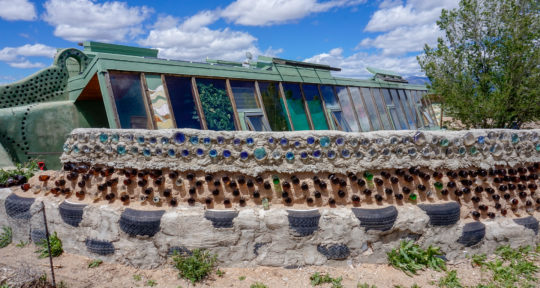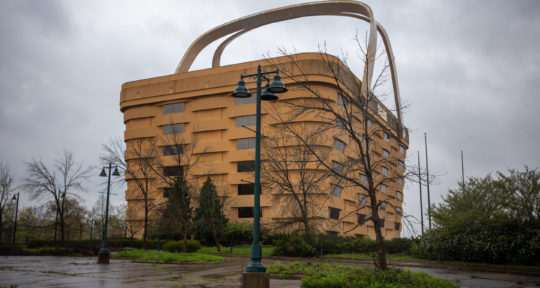At one point or another, most visitors to Northern Michigan are siphoned through the town of Charlevoix. Here, a drawbridge slows traffic to a crawl on the main road, giving even those just passing through plenty of time to take a look around.
For me, this look reveals that, between the stony Lake Michigan shore, red lighthouse, and cookie-cutter storefronts, there’s a mysterious quality to Charlevoix. The Weathervane Restaurant, which overlooks the drawbridge, is built from massive boulders, with a swooped roof in the shape of a seagull taking off into flight. A stone cottage by Lake Michigan is startlingly cut in half along its property line.
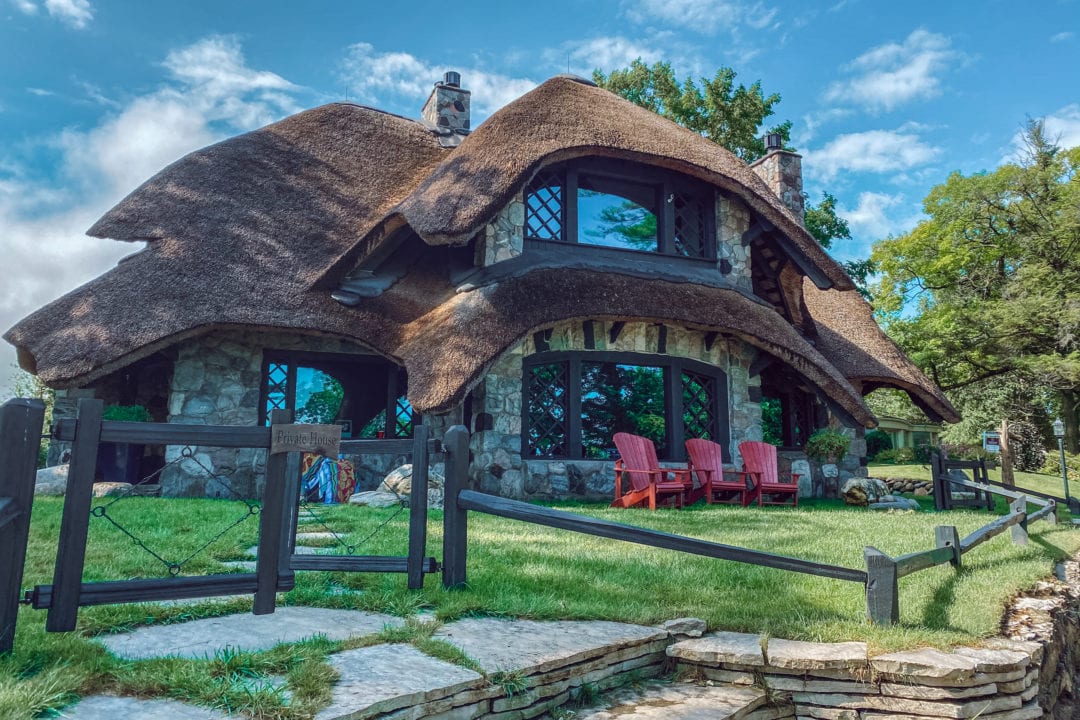
These, I soon learn, are some of Charlevoix’s Mushroom Houses, built by the eccentric architect Earl Young. The 28 structures—only found in Charlevoix—are also sometimes called “Hobbit Houses” or “Gnome Homes.” The name, however, is less important than the feeling Young’s houses evoke: It’s as if I’ve fallen into a fairy tale.
Collecting boulders
I meet Edith Pair, the owner of Charlevoix Mushroom House Tours, on a sweltering late summer day behind an art gallery on Bridge Street. I want to learn more about Earl Young and these mysterious houses, and Pair offers me a tour in an electric golf cart.
Just like Young, Pair is a lifelong Charlevoix resident. In 2006, she owned an art gallery in Young’s old office below the Weathervane Restaurant. “People would always ask about the houses and where they were,” she says. “I started researching them and one day a lady said, ‘I will pay you to take me to them.’” In 2009, Pair began offering tours full time.
It only takes a few minutes into the tour for me to realize the only thing more unusual than the houses is the architect himself. Earl Young grew up in Charlevoix in the late 1800s and early 1900s, but unlike most kids his age, he had an all-consuming obsession with boulders. “The older he got, the bigger the boulders got,” Pair says. He studied them, collected them, and dredged them from Lake Michigan, often burying them for safekeeping, like a squirrel preparing for the winter.
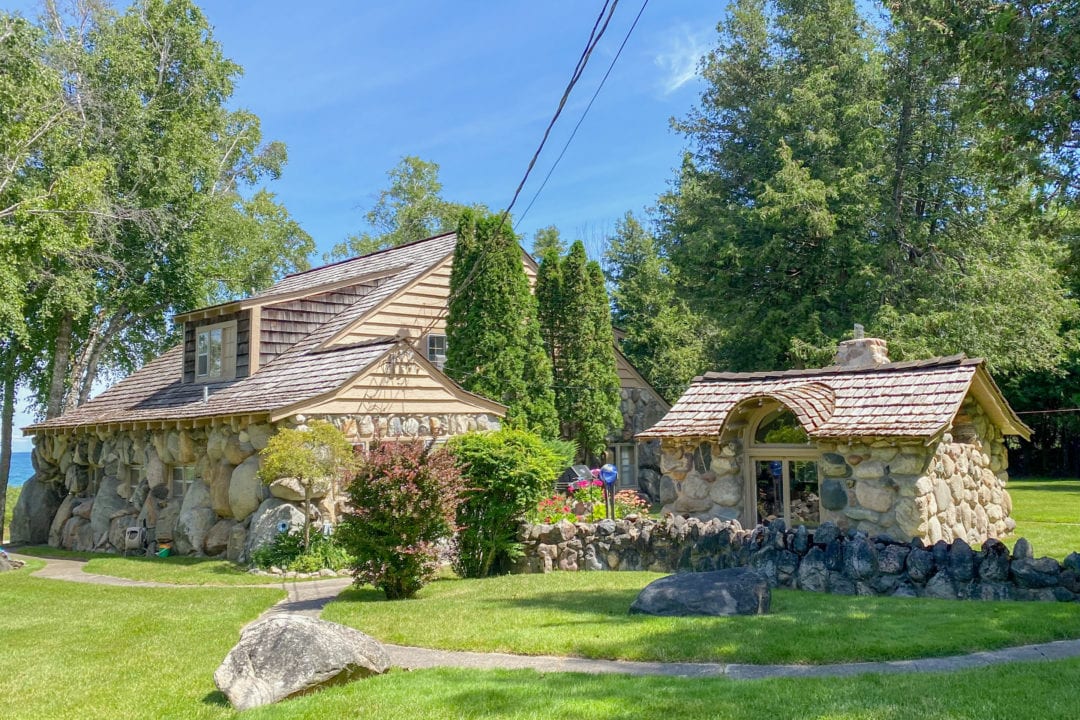
A University of Michigan dropout—and never a registered architect—Young had a chaotic and impassioned energy. Several people I speak to in Charlevoix point out that Young was not quite 5 feet tall. His small stature helps explain the houses’ low doorways and ceilings.
Grand dreams
Young was known for drawing his blueprints with sticks in the sand instead of on paper. His wife and childhood sweetheart, Irene Harsha, often had to translate his ideas to the confused builders.
Like his less-than-traditional work methods, Young’s architectural style is organic and unexpected. His work is identifiable by boulders, rope mortars, snow-capped chimneys, and—most famously—by their wavy cedar shake roofs. “He’d design the roof first,” Pair says, “then shove the house underneath.”
Young never leveled off the terrain before he built on it. The result is earthy houses that grow like natural extensions of the land. He also built the front doors so they weren’t visible from the front of the house—drawing comparisons to Frank Lloyd Wright that Pair says Young would not have appreciated.
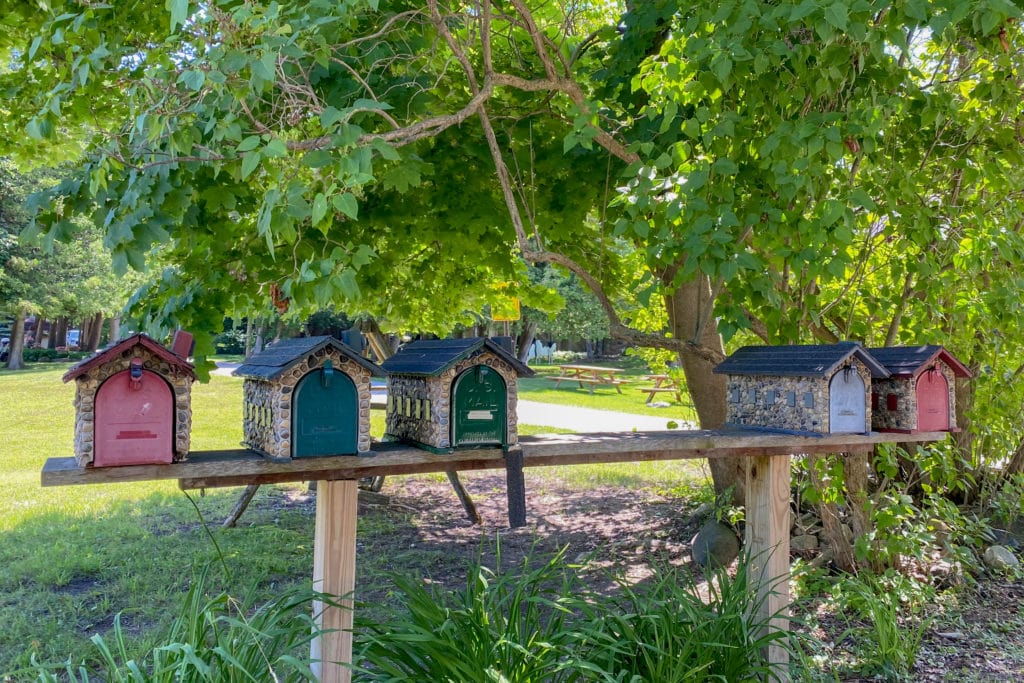
Young had grand dreams, and perhaps his biggest was to “build a fairy tale village of all stone houses.” He was granted the opportunity in 1923, when Charlevoix’s wealthy Bartholomew family asked him to build Boulder Park, a Lake Michigan resort neighborhood. In 1924, Young bought the entire neighborhood from the Bartholomews, who’d lost interest.
Young, however, was only getting started. He excavated a lagoon into Lake Michigan, and built cottage after cottage, testing out white, green, and red mortars. He even crafted “Boulder Park Village Standards” to maintain his organic aesthetic throughout the neighborhood.
But in 2020, driving through Boulder Park—its entrance marked with a 40-ton boulder—it’s clear that this dream didn’t quite work out the way Young planned.
Today, the neighborhood is a strange mix of modern houses alongside 10 of Young’s masterpieces. And even some of the stone cottages no longer look quite right—a few of the houses’ undulating cedar shake roofs have been redesigned by their new owners.
“He probably would’ve disowned these houses,” Pair says.
Great Depression
Why was Young’s dream of a fairy tale stone village never completed? “Unfortunately the Depression put a huge damper on a lot of his major plans,” Pair says. Young had to sell off many of the Boulder Park lots to survive.
But his most painful loss, by far, was Boulder Manor, his largest-ever undertaking. Young started collecting boulders for it in 1920, but had been designing it in his head for years before that. In 1928, Young began construction on the house, utilizing many of the boulders that he’d collected, which had to be re-excavated by horse teams.
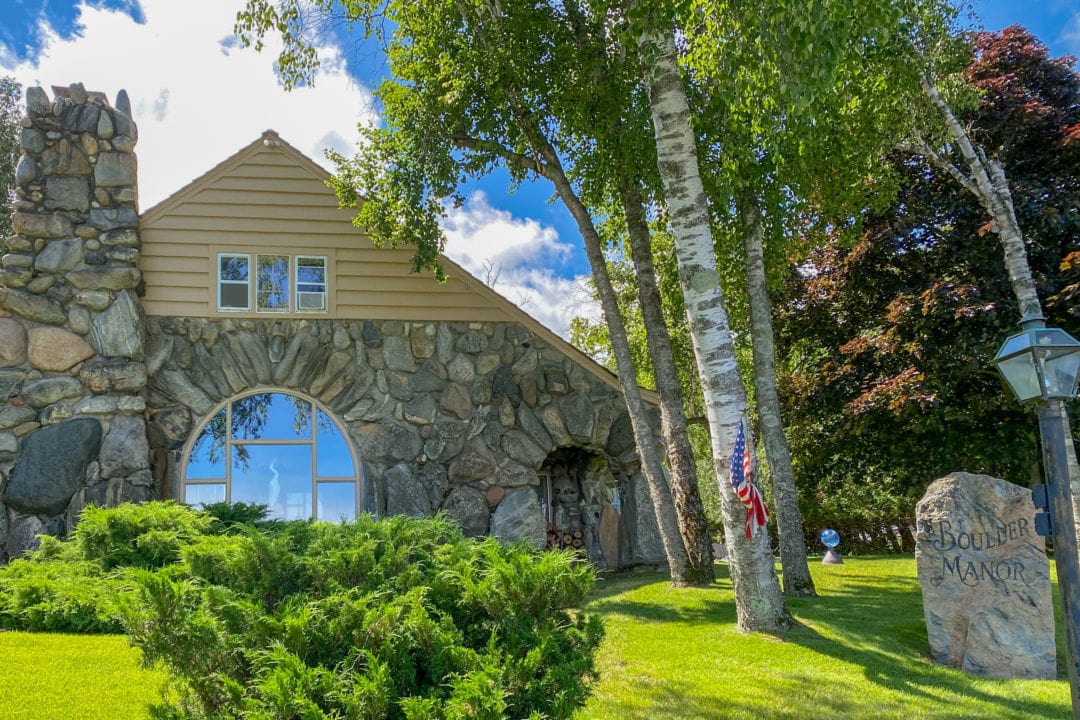
When the Great Depression came roaring in, Young lost Boulder Manor in bankruptcy. But he never gave up on it. According to Pair, “[Young] got a few commissions during this time to folks ‘unaffected’ by the lows of such an economic collapse. This allowed him the ability to eventually buy back Boulder Manor.”
But it wasn’t quite that simple. When Young re-purchased the house, it was in ruins. Despite the odds, in 1940—20 years after he first started it—Young finally completed his beloved Boulder Manor. “Had he more time and money, he really could have made some huge impacts on Charlevoix, above and beyond what he had done already,” says Pair. Standing in front of Boulder Manor, whose boulder-lined front windows reflect an endless expanse of turquoise Lake Michigan, we both sigh. “But we are happy with what we could get,” Pair says.
If you go
Charlevoix Mushroom House Tours offers daily tours to all Mushroom Houses between 10 a.m. and 4 p.m.



